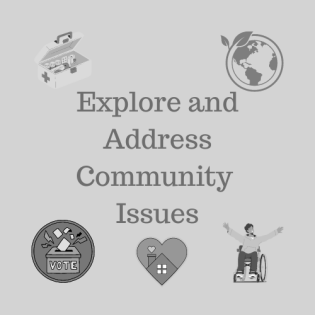Children participate in a trash clean-up and analyze the issue of pollution caused by trash, especially plastics. They discuss who should be responsible for preventing or cleaning up pollution - government, business, charitable organizations, and/or individuals.
Filter by subjects:
Filter by grades:
Filter by audience:
Filter by issue area:
Filter by content type:
Filter by resource type:
resource search
Students use standard software as they develop, research, and present a project related to community nonprofits.
These toolkits help youth dive deeply into and take action on specific issues they care about or have identified as areas of need in their community. Each toolkit includes background on the featured issue, community connections, project ideas, and planning guides.
Students read and analyze different leadership types and then create a visual presentation about a "servant leader" who puts the needs of those served first. They may explore the rich Our State of Generosity website to read about...
Learners take action for the common good to promote kindness in their school. They give smiley stickers to others or create posters to display around school with messages that promote kindness or teach people how to respond to bullying behavior.
Students identify causes they care about and related nonprofits or community resources. They use writing as a tool to make a difference, using persuasive writing techniques.
The group collaborates to plan, carry out, and reflect on an authentic service project that meets the health and safety needs of the community. This is based on the needs assessment conducted through surveying community members in previous lessons.
The purpose of this lesson is to teach learners how to give charity, to whom one should give charity, and to what extent/amount of charity is to be given. The lesson follows the examples and teachings of Maimonides (the Rambam) as well as interpretations and extensions of ancient Biblical laws...
Through observation of the water cycle, we discuss the importance of water as a nonrenewable resource. Why is being a good steward of this resource an example of acting for the Common Good?
